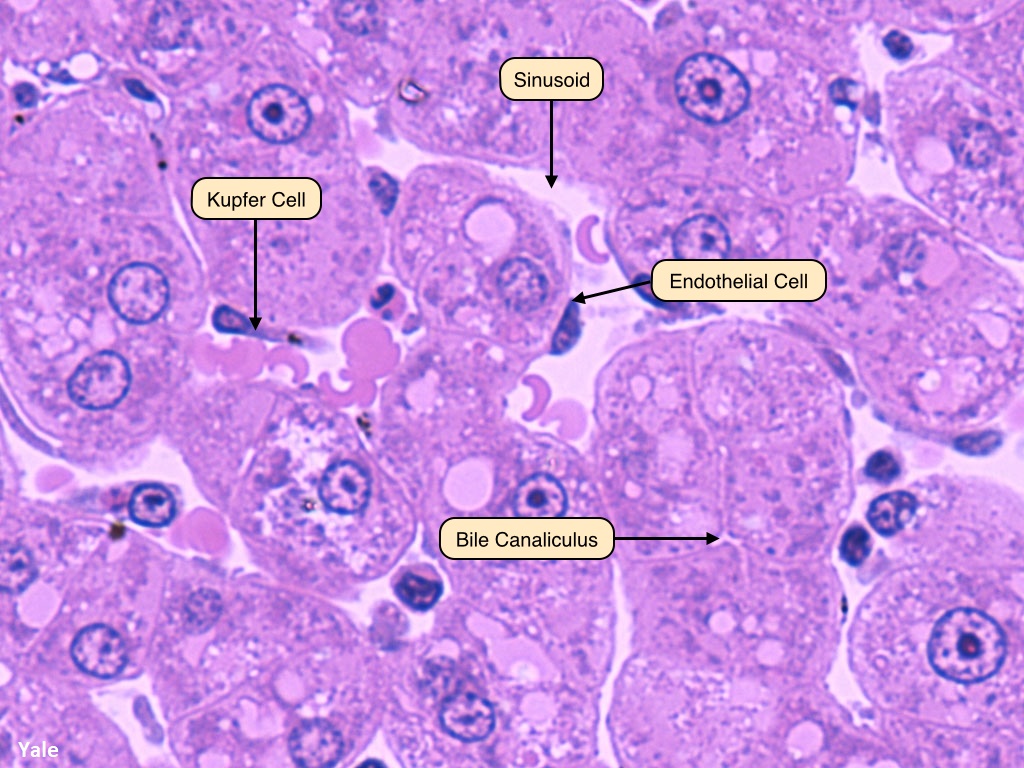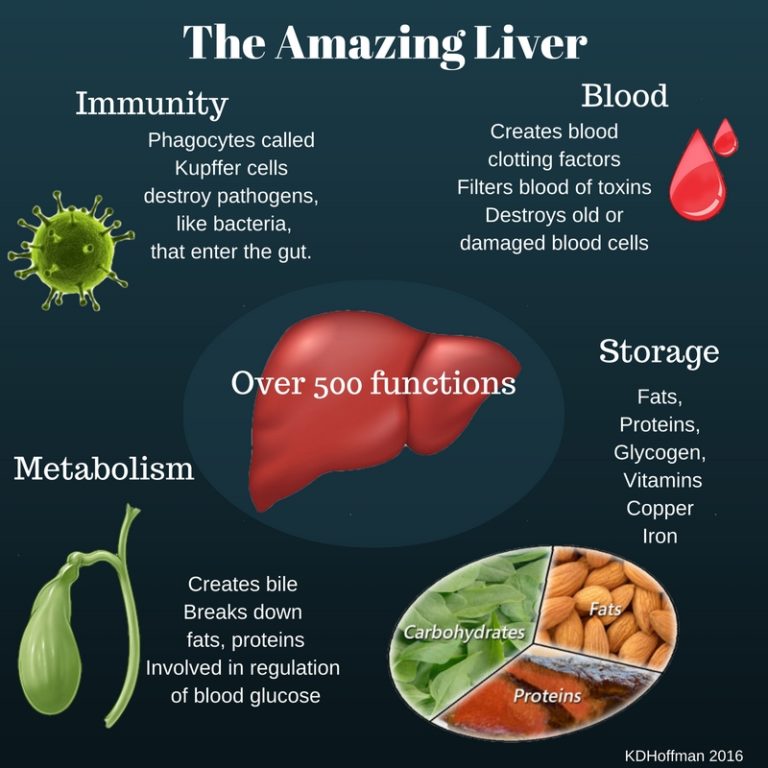The many functions of the liver
The recycling of red blood cells
Some proteins are fabricated by hepatocytes
What happens to these proteins
The liver and glucose
The many Functions of the liver
The liver performs hundreds of functions in the body such as detoxifying the blood, red blood cell homeostasis and hormone secretion. It is capable of regenerating its function but not its form, and processes the many biochemical reactions required for the whole body, acting as an assistant to digestion, processing carbohydrates, lipids and a central processor of proteins.

The recycling of red blood cells
Red blood cells are recycled by the liver. The first stage is phagocytosis by specialised cells called Kupffer cells. These are macrophages. The bile canaliculus is a very narrow passage while the sinusoid is a type of capillary.

Red blood cells are engulfed by the macrophage through a vesicle which then fuses with a lysosome that contains the digestive enzymes required to break down the red blood cells.
Their contents are separated i.e. haemoglobin becomes heme and globin. Heme is further processed into iron and bilirubin.
The iron is transported to the bone marrow where it can go towards the formation of new haemoglobin for new red blood cells.

Excess cholesterol goes towards bile salts which together with the previously removed bilirubin form bile which travels via the bile duct into the small intestine where it can help in lipid digestion before being egested in faeces.
Some proteins are fabricated by hepatocytes
The many proteins fabricated by liver cells (hepatocytes) are synthesised and packaged by the endoplasmic reticulum and….
